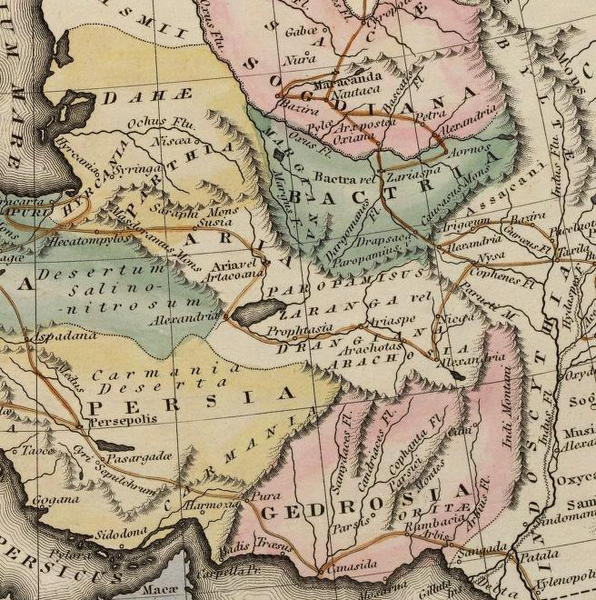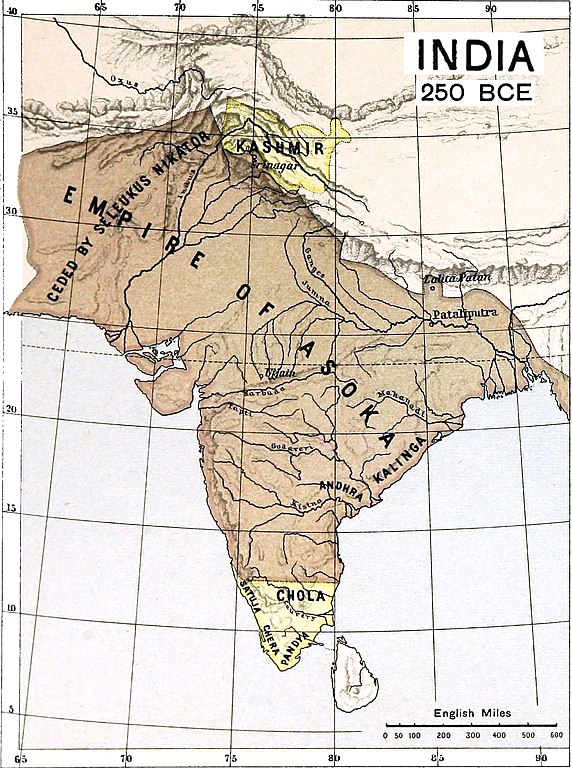
| GEDROSIA
Map showing Gedrosia in the Indian campaign of Alexander the Great
Maurya Empire of ancient India under the rule of Ashok the Great Gedrosia :
Country : Baluchistan
Gedrosia is the Hellenized name of the part of coastal Baluchistan that roughly corresponds to today's Makran. In books about Alexander the Great and his successors, the area referred to as Gedrosia runs from the Indus River to the southern edge of the Strait of Hormuz. It is directly to the south of the countries of Bactria, Arachosia and Drangiana, to the east of the country of Carmania and due west of the Indus River which formed a natural boundary between it and Western India. The native name of Gedrosia might have been Gwadar as there are two towns by that name and a bay (Gwadar Bay) in central Makran. It, along with Saurashtra, was an important part of the Maurya Empire of ancient India.
History
: There are two competing theories for the purpose of Alexander's decision to march through the desert rather than along the more hospitable coast. The first argues that this was an attempt to punish his men for their refusal to continue eastward at the Hyphasis River. The other argues that Alexander was attempting to imitate and succeed in the actions of Cyrus the Great, who had failed to cross the desert.
After the death of Alexander, this region became part of the holdings of Seleucus, who also held Ariya (modern-day Kabul), Gedrosia (Baluchistan), Arakeshiya (Kandhar), and Peripemisdai (Herat). The territories, known collectively as Ariyana were later lost to the Mauryan Empire of ancient India under the reign of Chandragupt Maurya.
Pliny the Elder while explaining the extent of India included four satrapies Arachosia, Gedrosia, Aria and Parapanisidae as western borders of India.
Source :
https://en.wikipedia.org/ |

